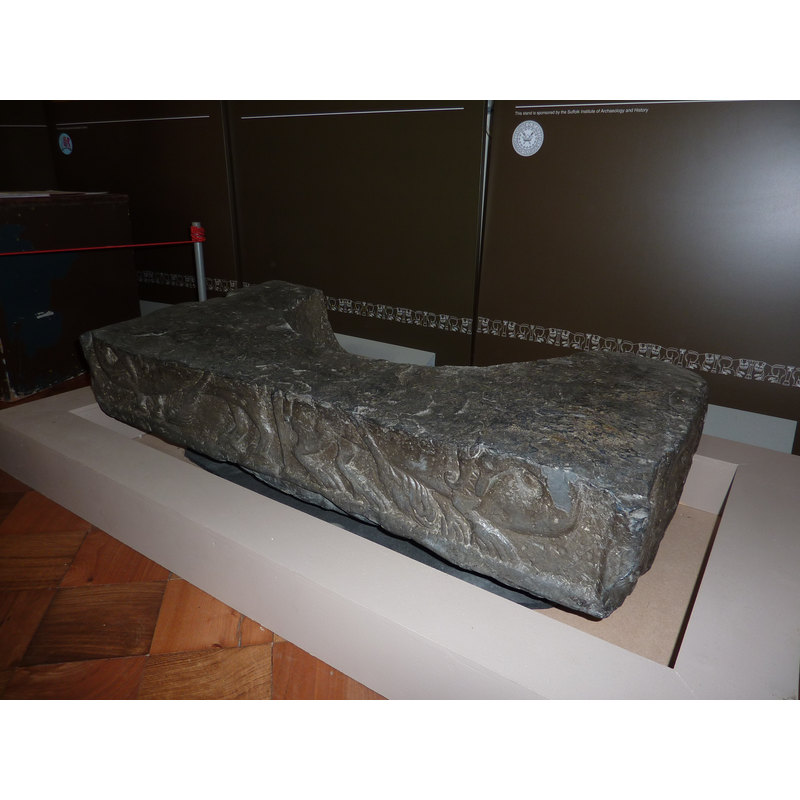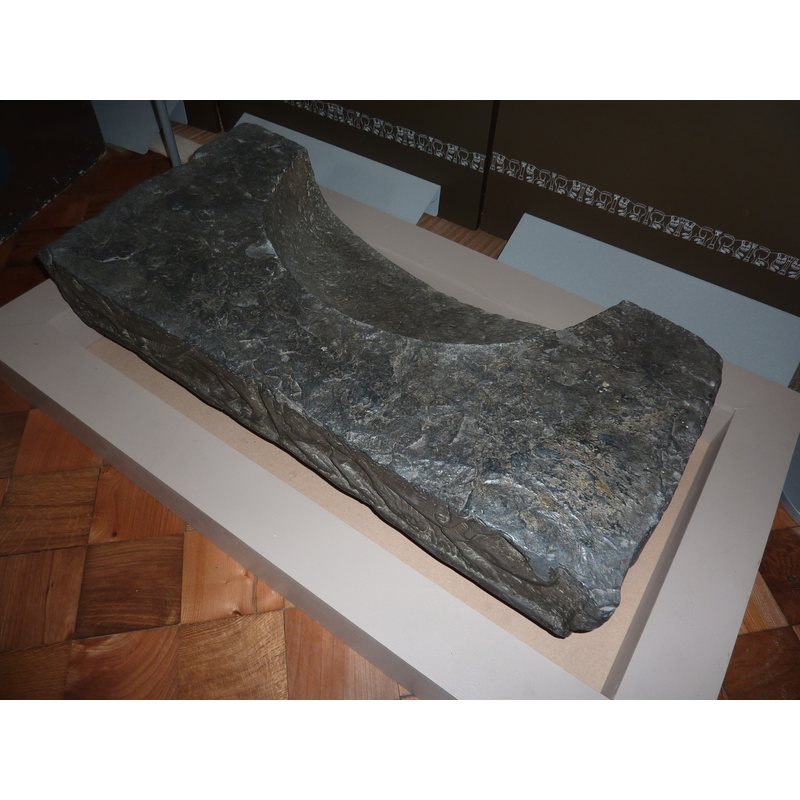Ipswich No. 9
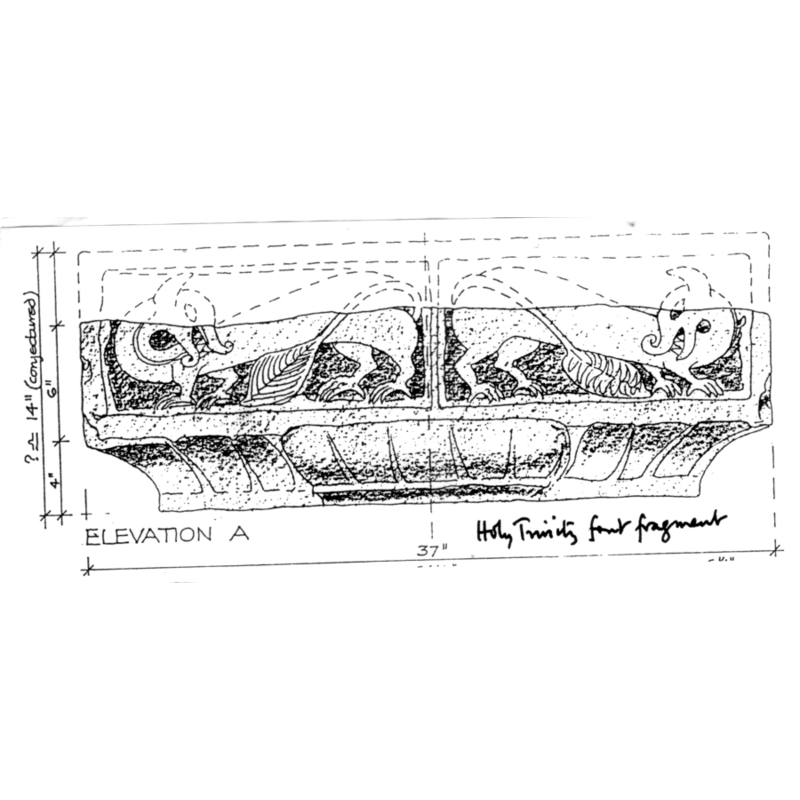
Image copyright © [in the public domain]
Assumed PD
Results: 9 records
B01: animal - mammal - lion - passant-regardant
B02: animal - mammal - lion - passant-regardant
B03: animal - mammal - lion?
B04: animal - mammal - lion?
view of basin
view of basin - detail
view of basin - detail
Scene Description: the reptilian back leg of one of the lions [cf. the legs of the lions on Ipswich St. Peter's font]
Copyright Statement: Image copyright © Janice Tostevin, 2010
Image Source: detail of a digital photograph taken 19 February 2010 by Janice Tostevin
Copyright Instructions: Standing permission
view of basin - fragment
INFORMATION
FontID: 08748IPS
Object Type: Baptismal Font1 (fragment)
Museum and Inventory Number: Ipswich Museums Service [Christchurch Mansion?]
Church/Chapel: Originally from the Priory of the Holy Trinity
Church Patron Saints: The Holy Trinity
Country Name: England
Location: Suffolk, East Anglia
Directions to Site: The Museum Mansion is located in downtown Ipswich; the priory church from which the fragment is suspected to originaty, was located nearby
Font Location in Church: [now in a museum]
Century and Period: 12th century, Romanesque
Workshop/Group/Artisan: Tournai font [fragment]
Credit and Acknowledgements: We are grateful to Janice Tostevin, of Ipswich, Suffolk, for the information on, and drawing and photographs of this object ["Dear Miguel, Well, that was a challenge that I definitely couldn't resist taking up straight away ; we live next door to Christchurch Mansion! Or, to be more accurate, it is the next place to our house on the map and we can see it from our attic window but we are separated from it by a high wall and have to walk right round St Margaret's churchyard to reach it ( just moments away ). We could neither of us remember having seen any font fragments in the mansion though, so we walked round there to check. No-one there had heard of it either. Then my husband remembered that he had a sketch somewhere of a font fragment, which he had picked up on a local history course in which he took part when we first came to Ipswich eleven years ago. So he dug it out ( bit of a miracle as he is not the most organised of people!) and there it was , labelled as Tournai limestone and believed to be the font of Holy Trinity Priory. That made complete sense, as the Mansion is built on the site of what was Holy Trinity Priory (also known as Christchurch Priory) and the Town Ditches are very close, so it would be a logical place for the font to have turned up. We have always taken a particular interest in Holy Trinity, as, when the Mansion and surrounding park were given to the borough in 1895 , the side strips were sold for housing and our house was one of those built on the land. I have concentrated on growing medieval plants in the garden, in remembrance of the old priory garden that must have been here before. So I wasn't going to delay the search for the font. We then discovered from a contact with an interest in church history that the fragment is now on display at St Peter's church, alongside their own Tournai marble font and, as luck would have it, it was open this morning for an exhibition on aviation. So we went down there and took some pictures. I'm afraid they aren't very good because it is displayed at floor level and rather crowded in by other objects. I knelt beside it and did my best but I couldn't get a decent angle. It is, apparently, on loan from the Ipswich Museum but, for the forseeable future, stays in St Peter's, a redundant church but one which is now used as a concert hall and an exhibiton and heritage centre, so it will be open quite frequently. [...] Anyway, here are the pictures of what I feel sure has been rightly described as the Holy Trinity font." [e-mail from Janice Tostevin (19 February 2010])
Font Notes:
Click to view
Listed in Cautley (1982) as the "considerable remains of another example [of 12th-century font] were found in the Ipswich Town Ditches and are now in Christchurch Mansion in that town." This is probably the one described in Drake (2003) as a fragment of a Tournai font "(about a quarter of the bowl only) in the collections of the Ipswich Museums" [NB: Drake does not provide any iconographic information about this fragment]. The object is the lower horizontal half of the vertical half of the original basin, which was a typical table-top type made of the bluish Tournai limestone of which the fonts at Winchester Cathedral, St. Mary Bourne, East Meon, etc., are made. The fragment has two opposed quadrupeds on the long side; they are rendered in a passant-regardant stance, with with their furry-end tails over their backs and down; their snouts and lower legs are visible in the remaining fragment, and they cannot be identified with total certainty as lions on the remaining evidence, though they are most likely to be; the one on the right side has acceptably feline claws, but the claws of the one on the left are more like a reptile's; this, however, is the case of the claws of the definite lions on St. Peter's font, so...; on the carving of the shorter left side of the fragment are the hind quarters and part of the tail of another quadruped, again not easily identifiable, as even less of its anatomical whole remains on the stone; on the carving of the shorter right side only a tail remains, and it is much the same as the others on the fragment. The fragment is believed (?) to be originally from the Priory of the Holy Trinity, also known as Christchurch Priory, near the site of which it was found [it was actually dug up in the Town Ditches, close by the old Priory site]. A drawing of the font side, probably by the hand of local historian John Blatchley, shows the reconstructed side with suggested measurements projected from the remaining fragment [original source not corroborated; received from Mrs. J. Tostevin, Ipswich]. Malster (2000) states that the Priory of the Holy Trinity was rebuilt by the Bishop of Norwich, John of Oxford, after a fire in 1194 and that, 'the fire might well have destroyed the priory church, since part of a broken marble font found in a ditch during the construction of William Pretty's works on Tower Ramparts could well have come from there ; the splitting of the marble is such as would result from extreme heat.'
MEDIUM AND MEASUREMENTS
Material: stone, limestone (black and blue) (Tournai marble)
Number of Pieces: [fragment]
Font Shape: square (mounted)
Basin Interior Shape: round
Basin Exterior Shape: square
Basin Total Height: 35 cm*
Trapezoidal Basin: 92.5 cm*
Notes on Measurements: * [tentative measurements in inches given in Blatchley's drawing -- cf. FontNotes] -- [compare with other Tournai fonts for similar measurements in Britain]
REFERENCES
Cautley, Henry Munro, Suffolk churches and their treasures, Woodbridge: The Boydell Press, 1982
Drake, Colin Stuart, "Romanesque Fonts in Kent: the French Connections", CXXIII, 2003, Archaeologia Cantiana, 2003, pp. 333-352; p. 351fn
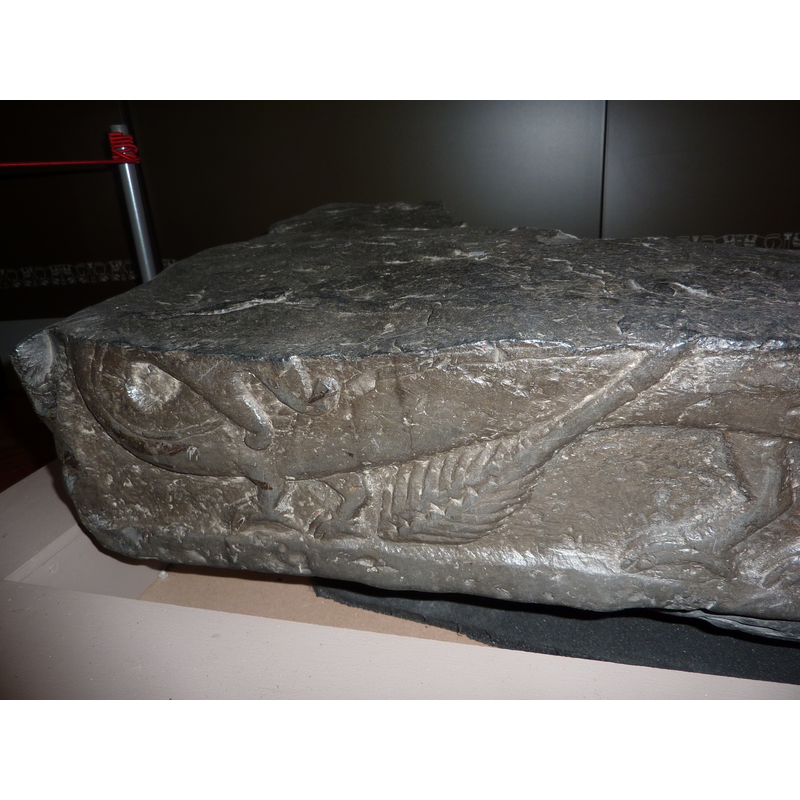
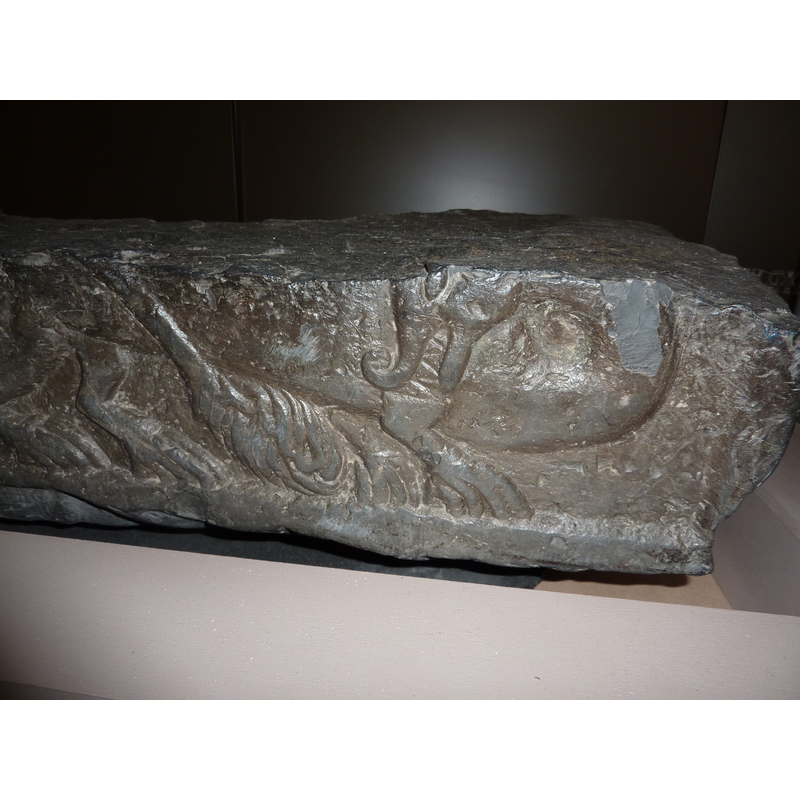
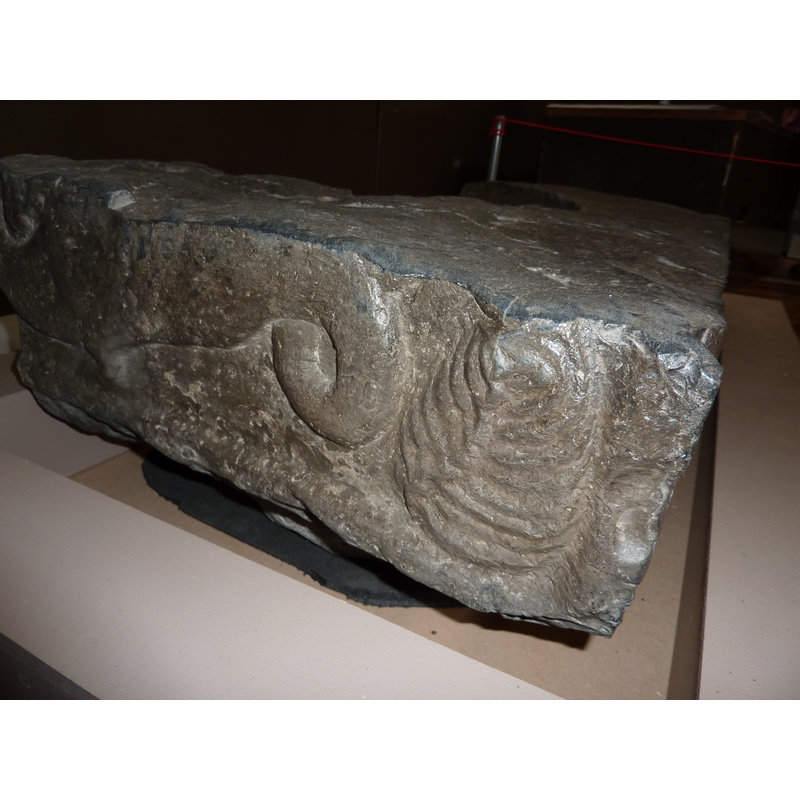
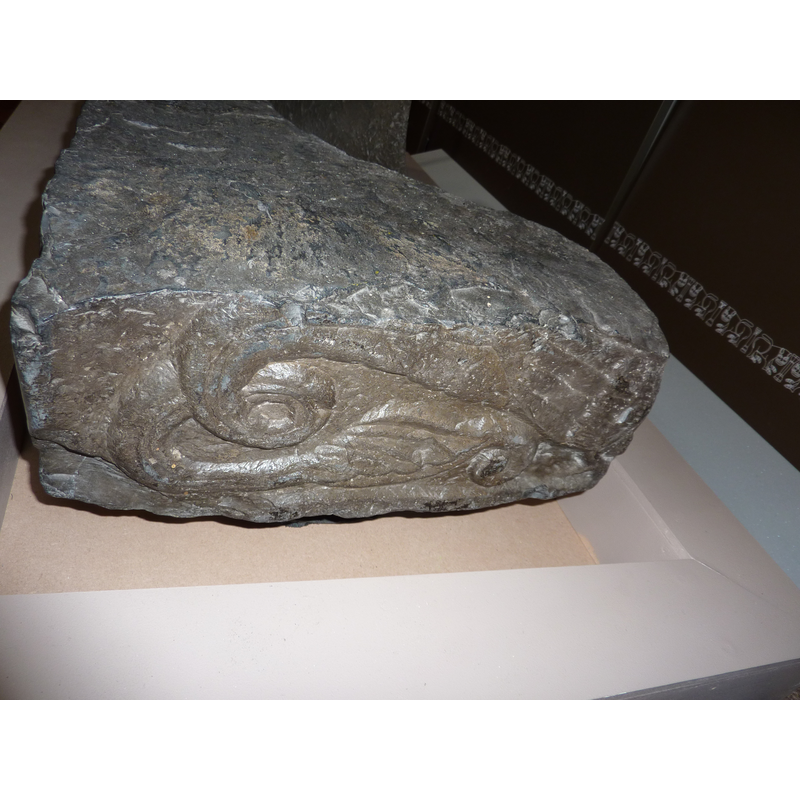
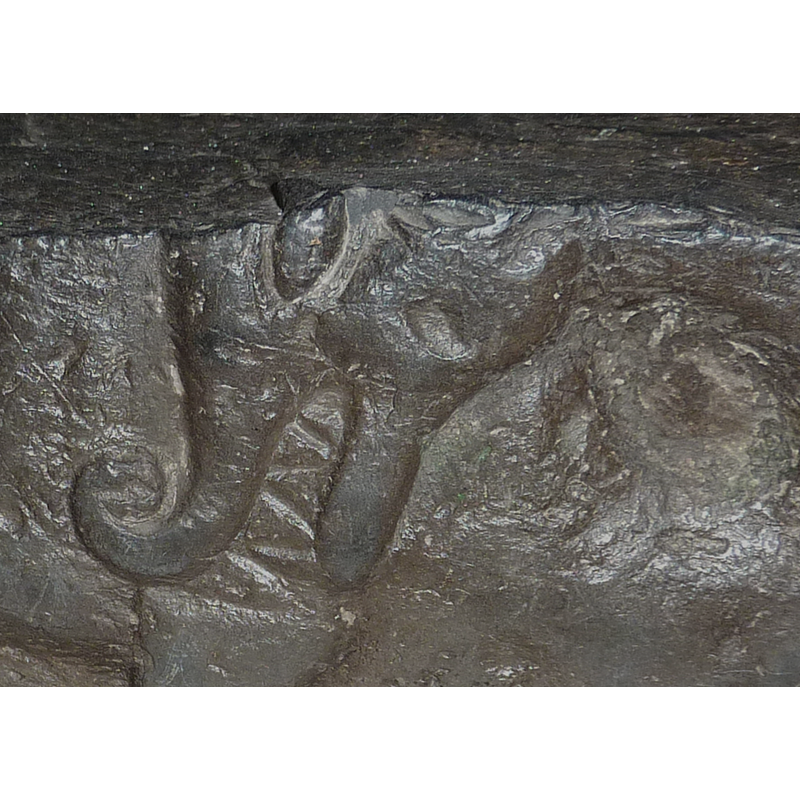
![the reptilian back leg of one of the lions [cf. the legs of the lions on Ipswich St. Peter's font]](/static-50478a99ec6f36a15d6234548c59f63da52304e5/compressed/1100219037_compressed.png)
